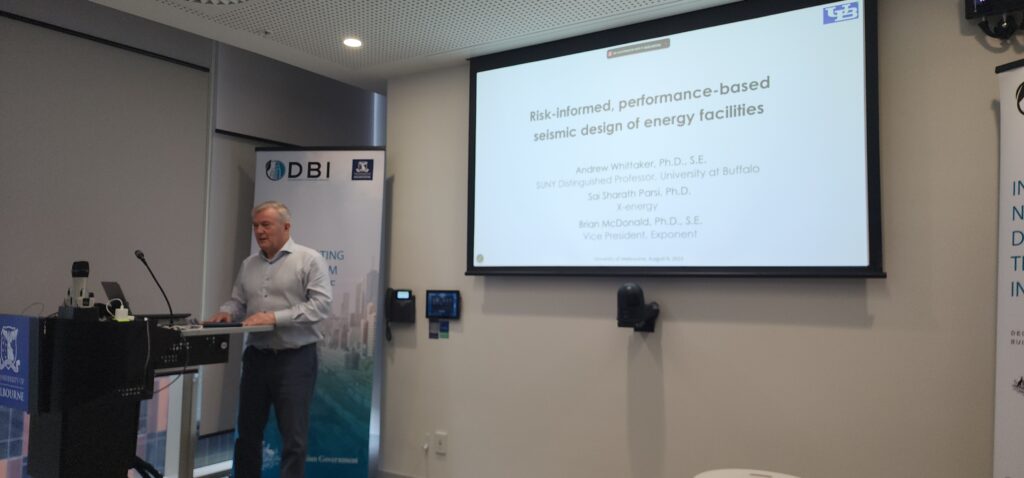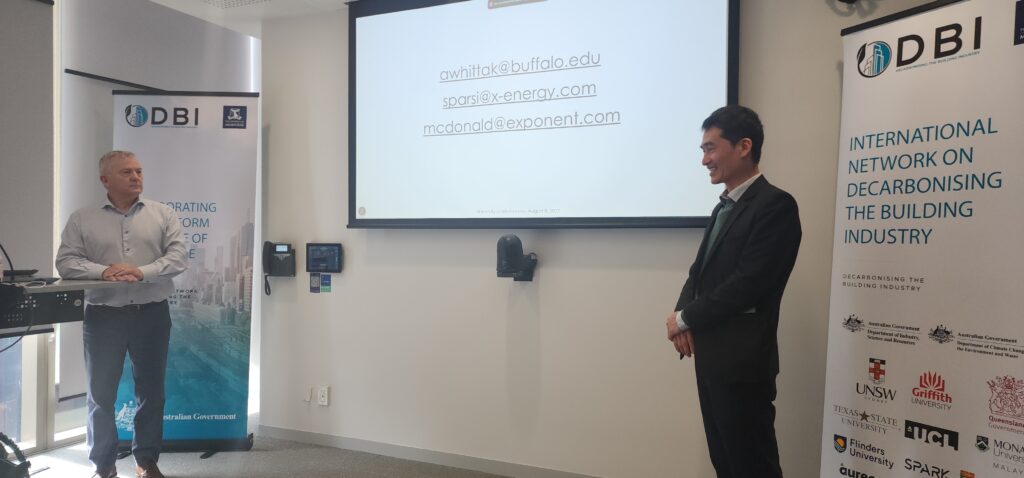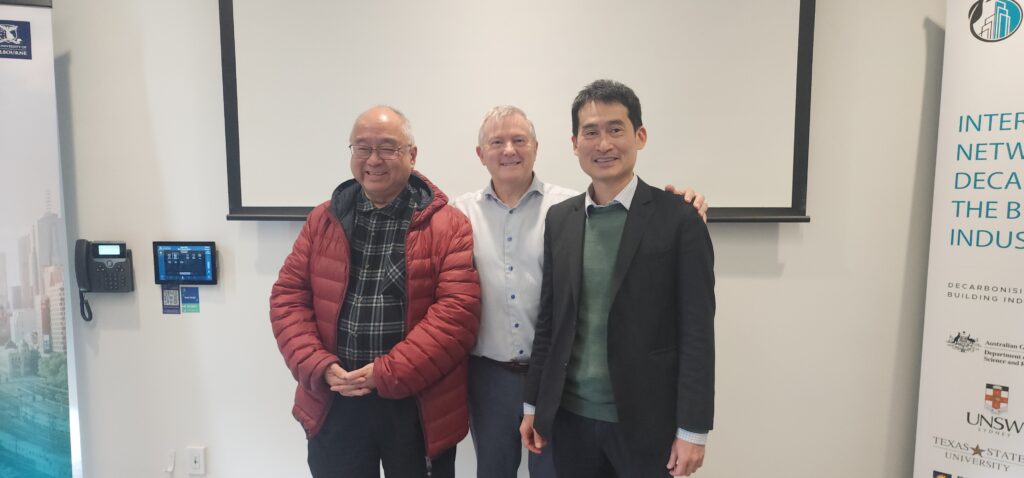On his recent Visiting Fellow trip to Melbourne, Professor Andrew Whittaker, a distinguished alumnus of the University of Melbourne, delivered a compelling seminar hosted by the Decarbonising the Building Industry (DBI) network. His presentation, titled Risk informed performance based seismic design of energy facilities, offered a deep exploration of how seismic design has evolved and its critical role in creating resilient infrastructure, particularly for energy facilities like nuclear power plants.

A legacy of expertise
A proud UniMelb graduate from 51 years ago, Professor Whittaker brings a wealth of experience as a global leader in seismic engineering. Formerly the chair of the Department of Civil, Structural and Environmental Engineering at the University at Buffalo, he has contributed to numerous high-profile projects, including nuclear facility designs and major infrastructure developments worldwide. His return to Melbourne was a homecoming, marked by a shared passion for advancing engineering practices to meet modern challenges.
Tracing the evolution of seismic design
Professor Whittaker’s talk traced the development of seismic design methodologies over three decades, structured around three generations of tools:
Generation 1 (1990s): This era began with the FEMA 273 and 274 guidelines, spurred by the 1989 Loma Prieta earthquake in California. These guidelines introduced performance-based seismic design, moving away from vague concepts like “life safety” to more defined performance levels such as collapse prevention, immediate occupancy, and operational status. Innovations included linear and non-linear static and dynamic analysis, as well as component-level acceptance criteria, enabling engineers to assess and rehabilitate existing buildings more effectively.
Generation 2 (2000–2012): Building on the first generation, these tools introduced advanced performance assessments, including intensity-based, scenario-based, and time-based evaluations. Whittaker highlighted the shift to non-linear dynamic analysis, the development of fragility functions to quantify damage probabilities, and consequence functions that translate engineering metrics into practical outcomes—deaths, dollars, and downtime. This approach allowed for more holistic risk assessments, addressing not just structural but also non-structural components, which represent 80–90% of a building’s asset value.
Generation 3 (Recent advancements): The latest frontier, risk-informed performance-based seismic design, focuses on achieving specific risk targets from the outset. Whittaker discussed its application in designing next-generation nuclear facilities, using seismic hazard curves and building-level fragility functions to meet precise performance goals, such as a mean annual frequency of exceedance (MAFE). This approach starts with a blank slate, enabling engineers to design structures that achieve desired performance levels with defined risk probabilities, a significant leap from assessing completed designs.
Key innovations and their impact
Professor Whittaker emphasised several groundbreaking tools that have reshaped seismic engineering:
Seismic hazard curves: These site-specific curves, dependent on factors like proximity to faults and soil conditions, allow engineers to predict ground shaking intensity and frequency, forming the basis for risk calculations.
Fragility functions: Moving from component-level to building-level assessments, these functions quantify the probability of damage states (e.g., cosmetic repair, epoxy injection, or demolition) based on parameters like story drift or floor acceleration.
Risk calculations: By combining hazard curves with fragility functions, engineers can perform convolutions to determine design response spectra, ensuring structures meet target performance goals. Whittaker also discussed simplified closed-form solutions, making these complex calculations more accessible to practitioners.
These tools are particularly vital for energy facilities, where safety and resilience are paramount. Whittaker’s work on nuclear standards, such as ASCE 43, demonstrates how these methodologies ensure structures can withstand design-basis earthquakes with a low probability of failure (1% or less), while also meeting stricter performance criteria at higher shaking levels.
Why this matters for decarbonising the building industry
The DBI network is committed to creating a built environment that is both resilient and low-carbon. Professor Whittaker’s presentation aligns with this mission by showcasing how advanced seismic design can enhance the durability of critical infrastructure, reducing the need for costly repairs and downtime that contribute to carbon emissions. By integrating risk-informed approaches, engineers can design buildings that not only withstand seismic events but also support long-term environmental goals through efficient, durable construction practices.

Looking ahead
The seminar sparked meaningful discussions among attendees, from academics to industry professionals, about the future of seismic design in Australia and beyond. As urbanisation increases and climate challenges intensify, adopting these advanced methodologies will be crucial for building safer, more resilient communities.
We extend our heartfelt thanks to Professor Andrew Whittaker for sharing his expertise and to the University of Melbourne for hosting this enriching event. The DBI network looks forward to continuing these conversations, driving innovation in the building industry to meet the demands of a changing world.

